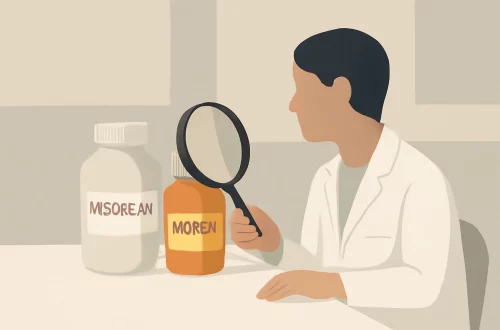
Understanding Back Pain When Bending Forward: Causes and Solutions
Back pain is a common complaint experienced by individuals of all ages and lifestyles. It can manifest in various forms and intensities, often resulting in discomfort that can disrupt daily activities. One specific scenario that many people encounter is experiencing pain when bending forward. This type of pain can be perplexing, leaving individuals wondering about the underlying causes and potential solutions.
Understanding the mechanics of the spine and the role of muscles, ligaments, and nerves is crucial in deciphering the reasons behind this particular discomfort. The spine is a complex structure made up of vertebrae, discs, and soft tissues that work together to provide stability and flexibility. When bending forward, the body engages various muscles and joints, which can sometimes lead to strain or injury, especially if proper form is not maintained.
Moreover, the prevalence of sedentary lifestyles and poor posture in today’s society contributes significantly to back pain issues. By examining the factors that lead to pain when bending forward, individuals can better equip themselves with knowledge and strategies for prevention and relief. This article will delve into the common causes of back pain in this context, as well as practical solutions to alleviate discomfort and promote better spinal health.
Common Causes of Back Pain When Bending Forward
When it comes to understanding back pain during forward bending, several factors can play a role. One of the most prevalent causes is muscle strain, particularly in the lower back. Lifting heavy objects or sudden movements can lead to overstretching or tearing of muscle fibers, resulting in pain. This can occur not only during physical exertion but also due to the cumulative effects of poor posture over time.
Another significant contributor to back pain is the condition of the intervertebral discs. These discs serve as cushions between the vertebrae and can deteriorate due to age or injury. A herniated or bulging disc can compress nearby nerves, leading to pain that radiates down the legs or manifests as a sharp sensation when bending forward.
Additionally, conditions such as sciatica, spinal stenosis, and arthritis can exacerbate discomfort. Sciatica refers to the irritation of the sciatic nerve, often caused by a herniated disc, which can result in pain that travels from the lower back down to the legs. Spinal stenosis involves narrowing of the spinal canal, placing pressure on the spinal cord and nerves, while arthritis can lead to inflammation and stiffness in the joints of the spine.
Various lifestyle factors, including obesity, lack of physical activity, and improper lifting techniques, can also contribute to back pain. Excess weight increases stress on the spine, while a sedentary lifestyle weakens core muscles that support the back. Furthermore, failing to use proper body mechanics when lifting or bending can lead to injury.
Understanding these causes is essential for addressing back pain effectively. By identifying the underlying issues, individuals can take proactive steps toward relief and prevention.
Strategies for Alleviating Pain
Alleviating back pain, particularly when bending forward, requires a multifaceted approach. One of the first steps individuals should consider is engaging in regular exercise to strengthen core muscles. Core strength is crucial for providing stability to the spine and reducing the risk of injury. Exercises such as planks, bridges, and gentle stretching can help improve muscle tone and flexibility.
Incorporating flexibility training into one’s routine is also beneficial. Stretching the hamstrings, hip flexors, and lower back can enhance mobility and relieve tension in the muscles that support the spine. Yoga and Pilates are excellent options for promoting flexibility and core strength while also encouraging proper posture.
Additionally, maintaining good posture throughout the day can significantly reduce the likelihood of experiencing pain when bending forward. Being mindful of body mechanics when sitting, standing, and lifting is essential. Using ergonomic furniture, such as chairs that provide proper lumbar support, can help maintain spinal alignment during prolonged periods of sitting.
For those already experiencing pain, applying heat or cold packs can offer temporary relief. Heat can help relax tight muscles, while cold therapy can reduce inflammation. Over-the-counter pain relief medications may also be used as directed, but it is essential to consult with a healthcare professional before starting any medication regimen.
If pain persists or worsens, seeking professional help is crucial. Physical therapists can design tailored rehabilitation programs that focus on strengthening and conditioning the back, while chiropractors may offer adjustments to improve spinal alignment.
Preventive Measures to Consider
Preventing back pain, especially when bending forward, is often more effective than treating it after it occurs. One key preventive measure is to maintain a healthy weight through a balanced diet and regular exercise. Excess weight places additional strain on the spine, increasing the likelihood of discomfort and injury.
In addition, adopting proper lifting techniques is vital. Individuals should always bend at the knees, keeping the back straight and using the legs to lift rather than the back. This technique distributes the weight more evenly and reduces stress on the spinal structures.
Incorporating movement into daily routines can also help prevent back pain. Spending extended periods in one position can lead to muscle stiffness and fatigue. Taking regular breaks to stretch and move around can alleviate tension and promote better circulation.
Furthermore, investing in supportive footwear can make a difference. Shoes that provide appropriate arch support and cushioning can help maintain proper alignment and reduce strain on the back. Avoiding high heels or unsupportive footwear is advisable, especially for those prone to back issues.
Lastly, practicing stress management techniques can indirectly benefit spinal health. Stress can lead to muscle tension, particularly in the back and neck. Techniques such as deep breathing, meditation, and mindfulness can help reduce stress levels and promote relaxation.
By implementing these preventive measures, individuals can significantly reduce their risk of experiencing back pain when bending forward, leading to a healthier and more active lifestyle.
When to Seek Medical Attention
While many cases of back pain can be managed with at-home strategies and lifestyle adjustments, there are instances when seeking medical attention becomes necessary. If back pain is accompanied by other symptoms such as numbness, tingling, or weakness in the legs, it may indicate a more serious underlying condition that requires professional evaluation.
Persistent pain that does not respond to conservative treatment methods or worsens over time should also prompt a visit to a healthcare provider. This is particularly important if the pain interferes with daily activities or sleep.
Individuals who have experienced significant trauma or injury to the back, such as a fall or accident, should seek immediate medical attention, as this may lead to fractures or other injuries that require intervention.
In addition, if back pain is accompanied by unexplained weight loss, fever, or bowel or bladder dysfunction, these could be signs of a serious medical condition, such as an infection or malignancy, warranting prompt evaluation.
Ultimately, while many individuals can manage back pain through self-care and preventive measures, it is essential to recognize when professional help is needed to ensure proper diagnosis and treatment.
—
This article is for informational purposes only and does not constitute medical advice. For any health concerns or medical issues, please consult a qualified healthcare professional.




